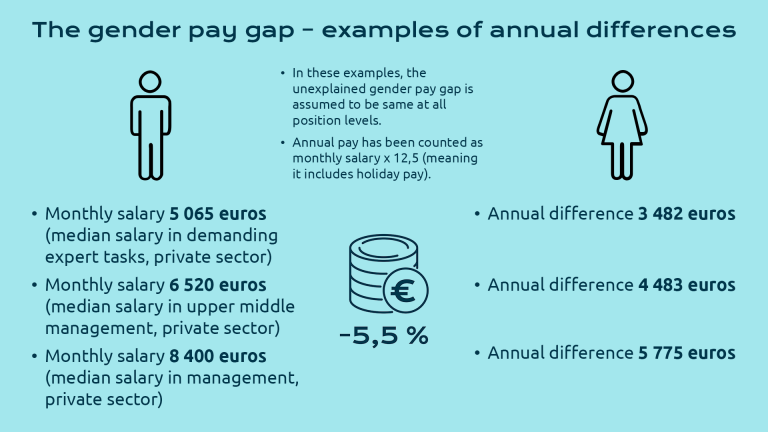
We keep hearing that Finland is among the most gender-equal countries in the world. For example, the latest (2024) Gender Gap Index report by the World Economic Forum rates Finland as number 2 in the world, behind Iceland yet just above Norway.
However, ratings depend on the measurements, as we all can understand. In the 2024 Gender Gap Index by EIGE, Finland is in 8th place – and this is among EU countries. Why? A major reason is the persistent gender segregation in education and the labour market. As the EIGE report points out, Finland ranks second to last among EU countries in the sub-domain of segregation.
Steep and persistent gender segregation is also the main contributor to the gender pay gap in Finland, currently standing at 16 percent. This means that when a man earns 1 euro, a woman earns 84 cents, despite women being more educated than men.
One could discuss at length the various and intertwining reasons and consequences of gender segregation in different domains, but let’s focus here on the gender pay gap in the field of technology. Our latest gender pay gap study reveals that median monthly salary for women was 90 % of the median salary for men in October 2023.
While the gender pay gap reflects internal segregation within the field of technology (e.g., men more often work in higher positions and in the private sector with better pay), we took these into account in the statistical model. Besides gender, the model considered: years of experience, position, role, employer’s industry, number of employees, labour market region, degree programme, postgraduate degree, and actual weekly working hours.
When we took all these factors into account, an unexplained gender pay gap of 5,5 % remained. This means that on average, a woman earns 5,5% less per month than a man. Hence, a woman can have the same degree from the same university, work in the same sector and have the same responsibilities - and get less pay. Annually, this amounts to considerable sums, as depicted below. Not to even mention over the course of one’s career overall.

While we are yet to see how the Pay Transparency Directive will be implemented in Finland, the good news is that companies and organizations can choose to do better already today. For example, IT company CGI has reached gender pay parity in three years. Other companies, like software company Vincit, have chosen to implement pay transparency.
What can you do? Regardless of your position or situation, talk about pay, although it may feel inconvenient at first. That is a step we can all take towards a more gender equal working life.
